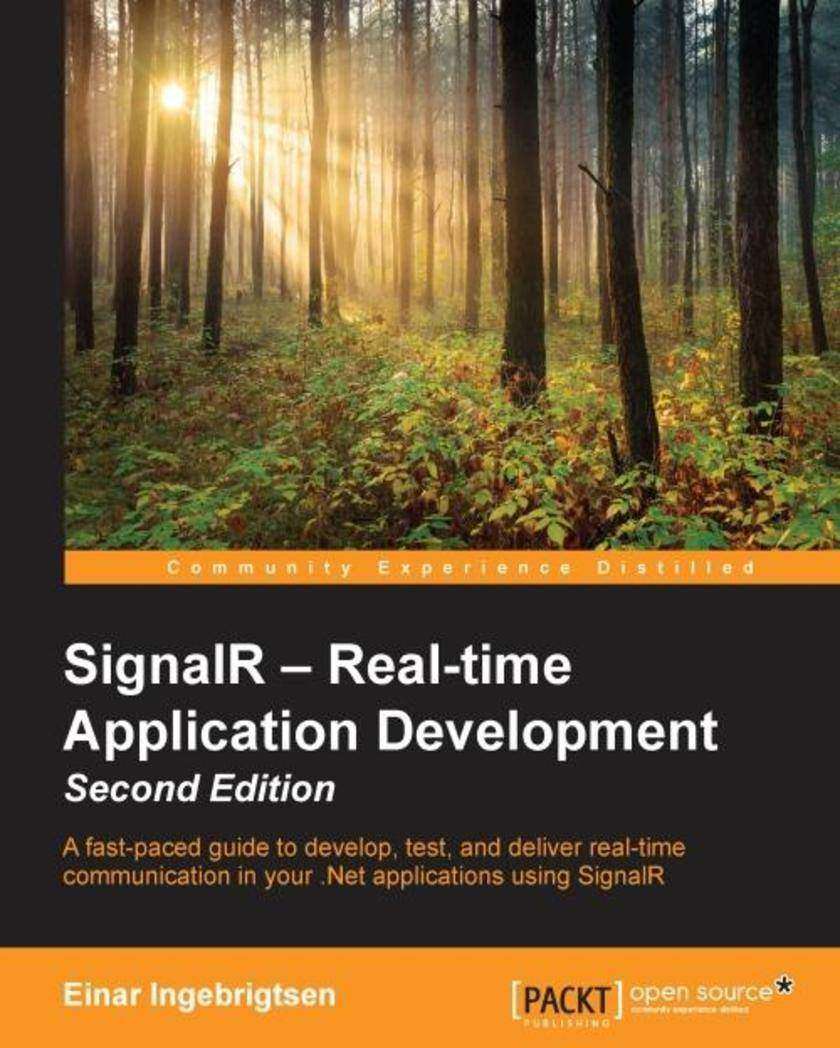
SignalR – Real-time Application Development - Second Edition
¥71.93
A fast-paced guide to develop, test, and deliver real-time communication in your .Net applications using SignalR About This Book Build and test real-time apps in .Net using the new features of SignalR Explore the fundamentals and the new methods and functions in the latest version of SignalR along with developing a complete application from scratch A progressive, hands-on guide to gain an understanding of the SignalR framework Who This Book Is For If you are a .Net developer with good understanding of the .Net platform then this is an ideal book for you to learn how to build real-time apps using the SignalR framework. What You Will Learn Explore the basic knowledge and understanding of SignalR Get to know how to connect client to the server Connecting a client with a server and setting a hub Creating group connections together Understand how to have state in the client to have specific operations Securing SignalR connections How to scale SignalR across multiple servers Building a client for WPF Building a client using Xamarin targeting Windows, iPhone and Android Get to grips with monitoring the traffic in SignalR using Fiddler for Windows and Charles for OSX Setting up code to host SignalR using OWIN In Detail With technology trends, demands on software have changed with more and more skilled users. Over the past few years, with services such as Facebook, Twitter and push notifications on smartphones, users are now getting used to being up to date with everything that happens all the time. With SignalR, the applications stay connected and will generate notifications when something happens either from the system or by other users thus giving new opportunities to enter into this new, exciting world of real-time application development. This is a step-by-step guide that follows a practical approach helping you as a developer getting to get started with SignalR by learning its fundamentals. It will help you through building real-time applications using the new methods and functions in the SignalR framework. Starting from getting persistent connections with the server, you will learn the basics of connecting a client to the server and how the messaging works. This will be followed by setting up a hub on the server and consuming it from a JavaScript client. Next you will be taught how you can group connections together to send messages. We will then go on to know how you can have state in the client to handle specific operations like connecting or disconnecting. Then, moving on you will learn how to secure your SignalR connections using OWIN and scaling SignalR across multiple servers. Next you will learn building a client for WPF and building a client using Xamarin that targets Windows Phone, iPhone and Android. Lastly, you will learn how to monitor the traffic in SignalR using Fiddler, Charles and hosting SignalR using OWIN. Style and approach This is an example- oriented and comprehensive guide to learning the fundamentals of SignalR to build real-time applications. It will help you build real-time applications on the .Net platform in a step-by-step manner along with giving teaching techniques to deal with possible performance bottlenecks and other key topics.
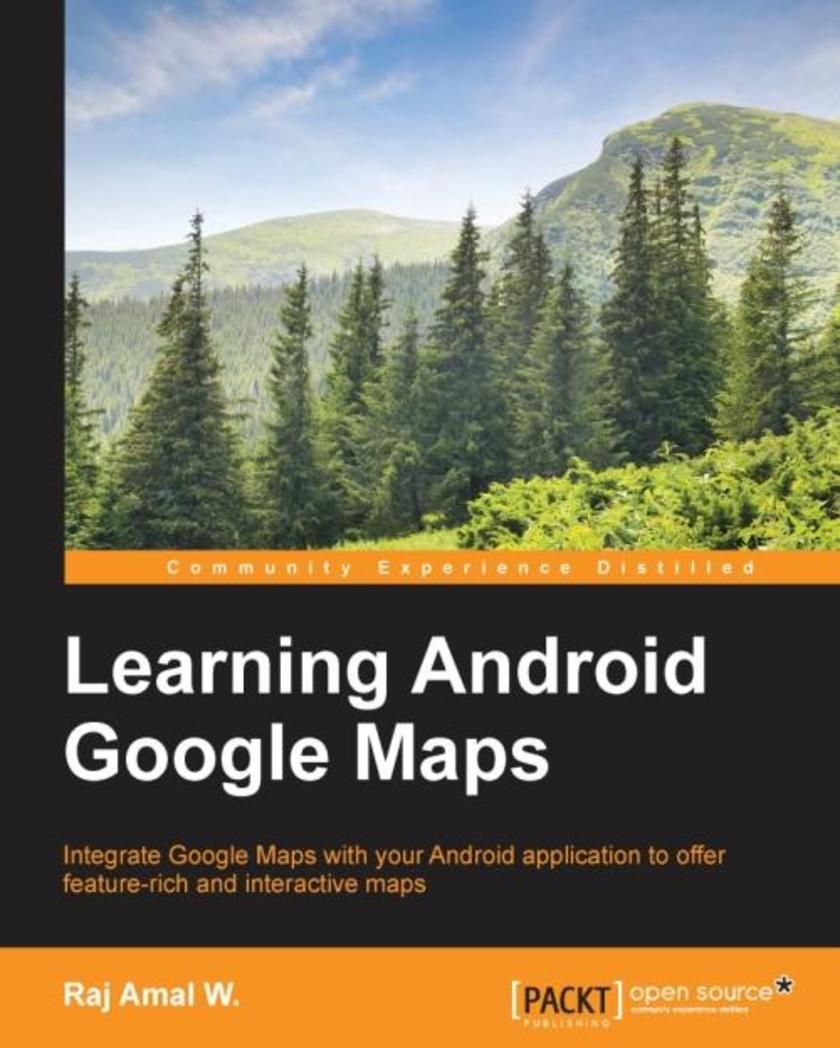
Learning Android Google Maps
¥90.46
Integrate Google Maps with your Android application to offer feature-rich and interactive maps About This Book Set up the development environment and obtain the Google API key to create your first map application Create a cutting edge Google maps application by implementing all the concepts learned A step-by-step tutorial guide that is full of pragmatic examples Who This Book Is For If you are an Android developer and want to integrate maps into your application, then this book is definitely for you. This book is intended for novice Android application developers who would like to get up and running with map rich applications using Google Maps. Some basic development experience would be helpful but it's not a mandate. What You Will Learn Get to know about the basic development environment setup needed to create a successful map application Generate an SHA1 fingerprint, obtain an API key, and create a basic map application Detect different types of maps and implement them in your application Add information to your map such as markers, overlays, information windows, and shapes Explore the interaction with maps and work with gestures Change the different camera views in your map application Work with real-time GPS location data and implementing it in your application Apply Street View and integrate the StreetViewPanoroma fragment to your application Employ the native Google maps application to solve some of the tasks using intents Create a cutting edge Google maps application by implementing all the concepts learned In Detail This book helps you to overcome the most common problems faced by users and helps you create a successful map application without any hassle. The book starts with a brief de*ion of how to set up an environment and obtain an API key to create your map application. This book will teach you about adding markers, overlays, and information windows to the map in detail. You will then dive deep into customizing various types of maps and working with location data and Google Street view. By the end of this book, you will be able to create succinct map applications in Android using Google maps efficiently. Style and approach The book is tailored for the reader with a fundamental approach to Android Google Maps providing a step-by-step introduction to Android Google Maps. It focuses on simple, easy-to-understand examples that are pragmatic and serve as useful basis for real-world applications. Different topics are approached in a bottom-up fashion, gradually going from the simplest foundations to the most advanced features.
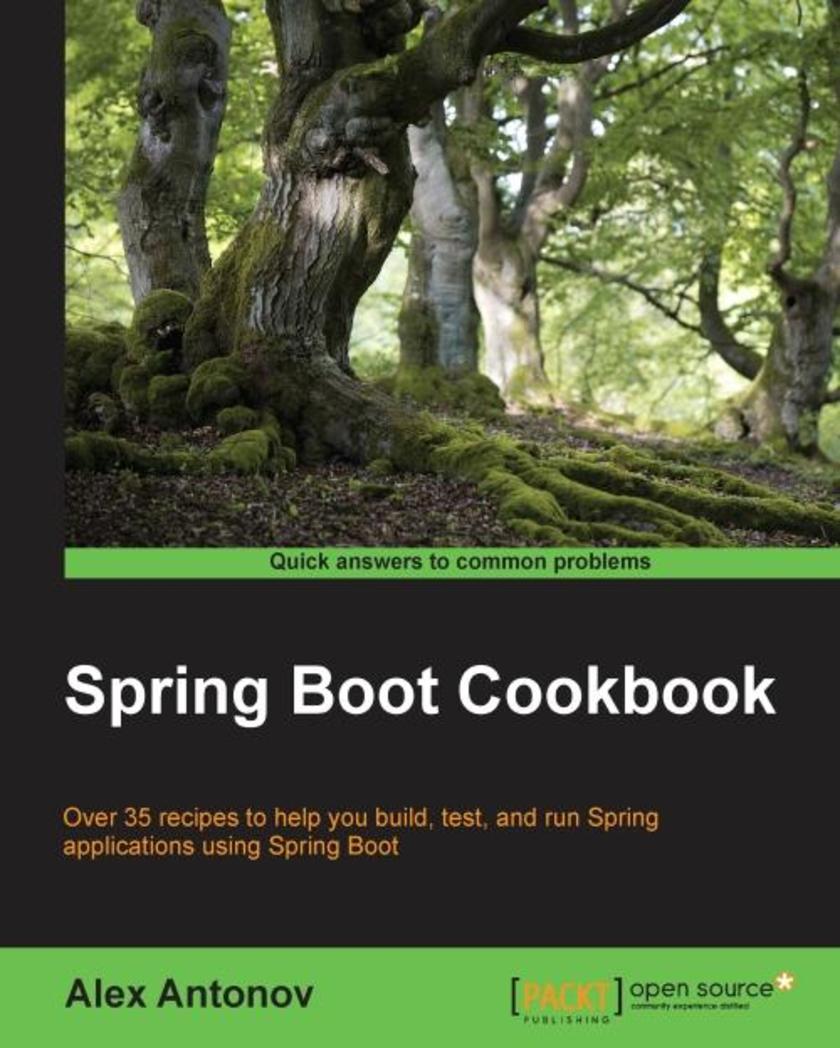
Spring Boot Cookbook
¥54.49
Over 35 recipes to help you build, test, and run Spring applications using Spring Boot About This Book Learn to create different types of Spring Boot applications, configure behavior, and add custom components Become more efficient in testing, deploying, and monitoring Spring Boot based applications This is a practical guide that will help Spring developers to develop and deploy applications using Spring Boot Who This Book Is For If you are a Spring Developer who has good knowledge level and understanding of Spring Boot and application development and now want to learn efficient Spring Boot development techniques in order to make the existing development process more efficient, then this book is for you. What You Will Learn Create Spring Boot applications from scratch Configure and tune web applications and containers Create custom Spring Boot auto-configurations and starters Use Spring Boot Test framework with JUnit, Cucumber, and Spock Configure and tune web applications and containers Deploy Spring Boot as self-starting executables and Docker containers Monitor data using DropWizard, Graphite, and Dashing In Detail Spring Boot is Spring's convention-over-configuration solution. This feature makes it easy to create Spring applications and services with absolute minimum fuss. Spring Boot has the great ability to be customized and enhanced, and is specifically designed to simplify development of a new Spring application. This book will provide many detailed insights about the inner workings of Spring Boot, as well as tips and recipes to integrate the third-party frameworks and components needed to build complex enterprise-scale applications. The book starts with an overview of the important and useful Spring Boot starters that are included in the framework, and teaches you to create and add custom Servlet Filters, Interceptors, Converters, Formatters, and PropertyEditors to a Spring Boot web application. Next it will cover configuring custom routing rules and patterns, adding additional static asset paths, and adding and modifying servlet container connectors and other properties such as enabling SSL. Moving on, the book will teach you how to create custom Spring Boot Starters, and explore different techniques to test Spring Boot applications. Next, the book will show you examples of configuring your build to produce Docker images and self-executing binary files for Linux/OSX environments. Finally, the book will teach you how to create custom health indicators, and access monitoring data via HTTP and JMX. Style and approach This book is a cohesive collection of recipes that provide developers with a set of connected guidelines on how to build, configure, and customize their application, starting from the design and development stages, all the way through testing, deployment, and production monitoring.
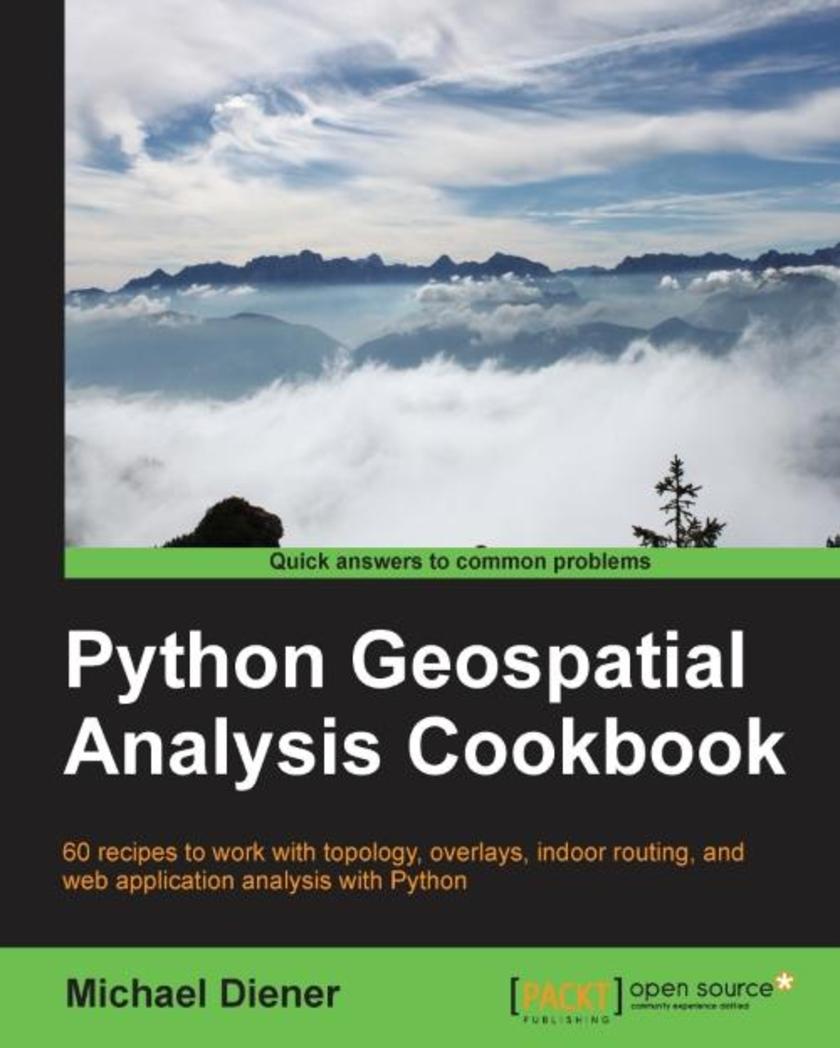
Python Geospatial Analysis Cookbook
¥90.46
Over 60 recipes to work with topology, overlays, indoor routing, and web application analysis with Python About This Book Explore the practical process of using geospatial analysis to solve simple to complex problems with reusable recipes Concise step-by-step instructions to teach you about projections, vector, raster, overlay, indoor routing and topology analysis Create a basic indoor routing application with geodjango Who This Book Is For If you are a student, teacher, programmer, geospatial or IT administrator, GIS analyst, researcher, or scientist looking to do spatial analysis, then this book is for you. Anyone trying to answer simple to complex spatial analysis questions will get a working demonstration of the power of Python with real-world data. Some of you may be beginners with GIS, but most of you will probably have a basic understanding of geospatial analysis and programming. What You Will Learn Discover the projection and coordinate system information of your data and learn how to transform that data into different projections Import or export your data into different data formats to prepare it for your application or spatial analysis Use the power of PostGIS with Python to take advantage of the powerful analysis functions Execute spatial analysis functions on vector data including clipping, spatial joins, measuring distances, areas, and combining data to new results Create your own set of topology rules to perform and ensure quality assurance rules in Python Find the shortest indoor path with network analysis functions in easy, extensible recipes revolving around all kinds of network analysis problems Visualize your data on a map using the visualization tools and methods available to create visually stunning results Build an indoor routing web application with GeoDjango to include your spatial analysis tools built from the previous recipes In Detail Geospatial development links your data to places on the Earth’s surface. Its analysis is used in almost every industry to answer location type questions. Combined with the power of the Python programming language, which is becoming the de facto spatial *ing choice for developers and analysts worldwide, this technology will help you to solve real-world spatial problems. This book begins by tackling the installation of the necessary software dependencies and libraries needed to perform spatial analysis with Python. From there, the next logical step is to prepare our data for analysis; we will do this by building up our tool box to deal with data preparation, transformations, and projections. Now that our data is ready for analysis, we will tackle the most common analysis methods for vector and raster data. To check or validate our results, we will explore how to use topology checks to ensure top-quality results. This is followed with network routing analysis focused on constructing indoor routes within buildings, over different levels. Finally, we put several recipes together in a GeoDjango web application that demonstrates a working indoor routing spatial analysis application. The round trip will provide you all the pieces you need to accomplish your own spatial analysis application to suit your requirements. Style and approach Easy-to-follow, step-by-step recipes, explaining from start to finish how to accomplish real-world tasks.
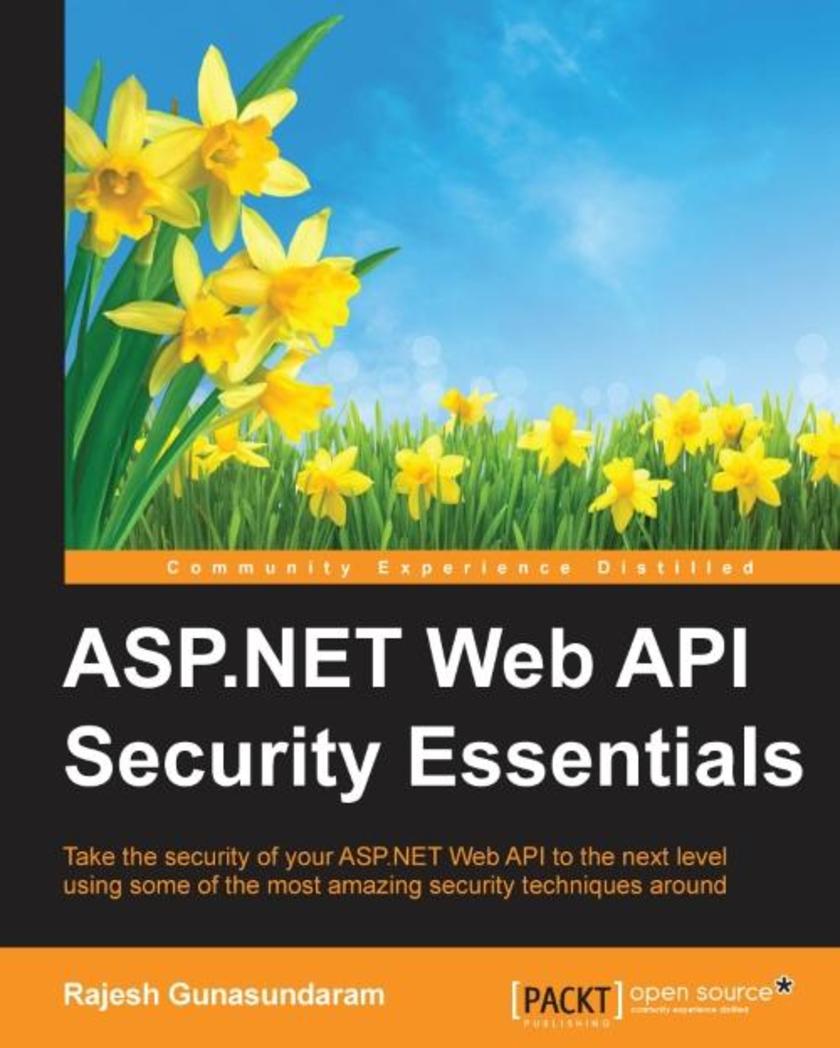
ASP.NET Web API Security Essentials
¥63.21
Take the security of your ASP.NET Web API to the next level using some of the most amazing security techniques around About This Book This book has been completely updated for ASP.NET Web API 2.0 including the new features of ASP.NET Web API such as Cross-Origin Resource Sharing (CORS) and OWIN self-hosting Learn various techniques to secure ASP.NET Web API, including basic authentication using authentication filters, forms, Windows Authentication, external authentication services, and integrating ASP.NET’s Identity system An easy-to-follow guide to enable SSL, prevent Cross-Site Request Forgery (CSRF) attacks, and enable CORS in ASP.NET Web API Who This Book Is For This book is intended for anyone who has previous knowledge of developing ASP.NET Web API applications. Good working knowledge and experience with C# and.NET Framework are prerequisites for this book. What You Will Learn Secure your web API by enabling Secured Socket Layer (SSL) Manage your application’s user accounts by integrating ASP.NET’s Identity system Ensure the security of your web API by implementing basic authentication Implement forms and Windows authentication to secure your web API Use external authentication such as Facebook and Twitter to authenticate a request to a web API Protect your web API from CSRF attacks Enable CORS in your web API to explicitly allow some cross-origin requests while rejecting others Fortify your web API using OAuth2 In Detail This book incorporates the new features of ASP.NET Web API 2 that will help you to secure an ASP.NET Web API and make a well-informed decision when choosing the right security mechanism for your security requirements. We start by showing you how to set up a browser client to utilize ASP.NET Web API services. We then cover ASP.NET Web API’s security architecture, authentication, and authorization to help you secure a web API from unauthorized users. Next, you will learn how to use SSL with ASP.NET Web API, including using SSL client certificates, and integrate the ASP.NET Identity system with ASP.NET Web API. We’ll show you how to secure a web API using OAuth2 to authenticate against a membership database using OWIN middleware. You will be able to use local logins to send authenticated requests using OAuth2. We also explain how to secure a web API using forms authentication and how users can log in with their Windows credentials using integrated Windows authentication. You will come to understand the need for external authentication services to enable OAuth/OpenID and social media authentication. We’ll then help you implement anti-Cross-Site Request Forgery (CSRF) measures in ASP.NET Web API. Finally, you will discover how to enable Cross-Origin Resource Sharing (CORS) in your web API application. Style and approach Each chapter is dedicated to a specific security technique, in a task-based and easy-to-follow way. Most of the chapters are accompanied with source code that demonstrates the step-by-step guidelines of implementing the technique, and includes an explanation of how each technique works.
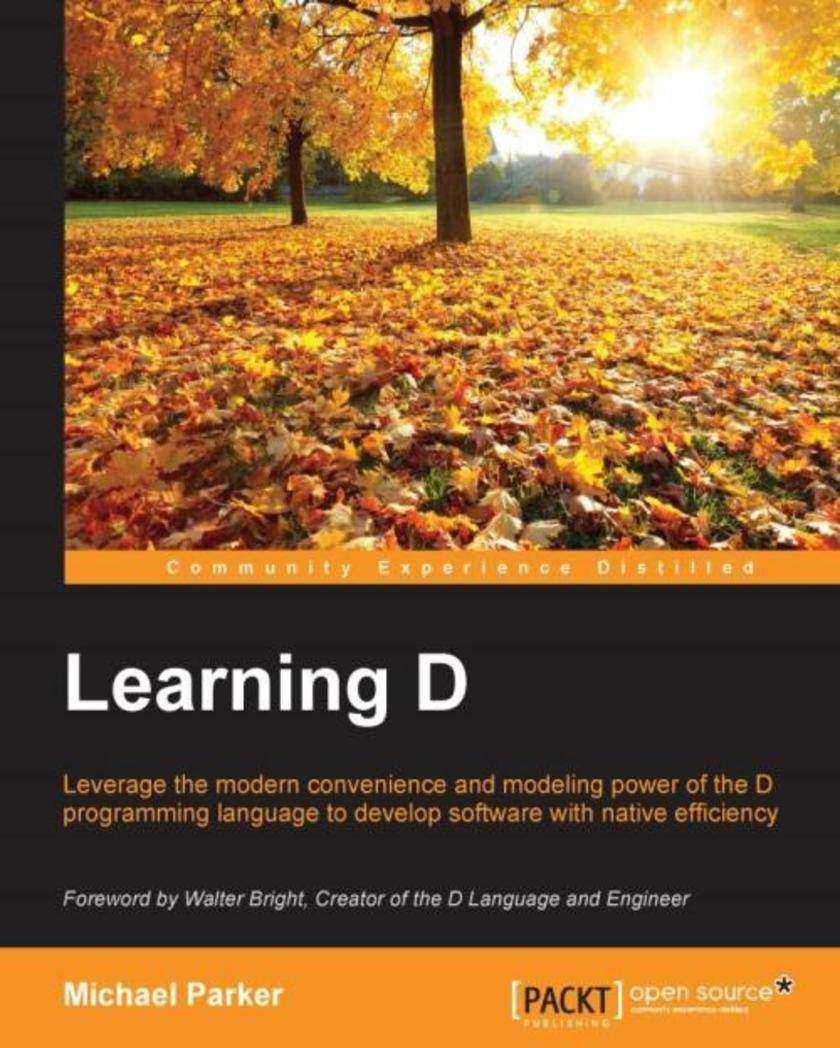
Learning D
¥90.46
Leverage the modern convenience and modelling power of the D programming language to develop software with native efficiency About This Book Acquire the skills to understand the fundamentals of D through its support for imperative and object-oriented programming Take advantage of D’s powerful compile-time features, templates and ranges to apply generative, generic, and functional style A systematic guide that will help you become familiar with the concepts in D with the help of simple and easy-to-understand examples Who This Book Is For This book is intended for those with some background in a C-family language who want to learn how to apply their knowledge and experience to D. Perhaps you’re a college student looking to use D for hobby projects, or a career programmer interested in expanding your skillset. This book will help you get up to speed with the language and avoid common pitfalls that arise when translating C-family experience to D. What You Will Learn Compile programs with DMD and manage projects with DUB Work efficiently by binding your D programs with new and existing C libraries Generate code at compile-time to enhance runtime performance Implement complex templates for more powerful generic code Write idiomatic D with range-based functional pipelines Use the DUB repository to find a link with a variety of D libraries Implement a web-app in D from the ground up In Detail D is a modern programming language that is both powerful and efficient. It combines multiple paradigms in a way that opens up a whole new world of software design. It is used to develop both desktop and web applications, with future targets including mobile, and is available on multiple platforms. It is familiar to anyone with some experience in one or more of the C-family languages. However, hidden in the similarities are several differences that can be surprising when trying to apply common idioms from other languages. When learning D on your own, this can make it more time-consuming to master. In order to make the most of the language and become an idiomatic D programmer, it’s necessary to learn how to think in D. This book familiarizes you with D from the ground up, with a heavy focus on helping you to avoid surprises so that you can take your D knowledge to the next level more quickly and painlessly. Your journey begins with a taste of the language and the basics of compiling D programs with DMD, the reference D compiler developed by Digital Mars, and DUB, a community-developed build utility and package manager. You then set out on an exploration of major language features. This begins with the fundamentals of D, including built-in types, conditionals, loops and all of the basic building-blocks of a D program, followed by an examination of D’s object-oriented programming support. You’ll learn how these features differ from languages you may already be familiar with. Next up are D’s compile-time features, such as Compile-Time Function Evaluation and conditional compilation, then generic programming with templates. After that, you’ll learn the more advanced features of ranges and functional pipeline programming. To enhance your D experience, you are next taken on a tour of the D ecosystem and learn how to make D interact with C. Finally, you get a look at D web development using the vibe.d project and the book closes with some handy advice on where to go next. Style and approach A friendly guide to the D programming language and its ecosystem that walks programmers through all they need to know for a painless experience in learning D.
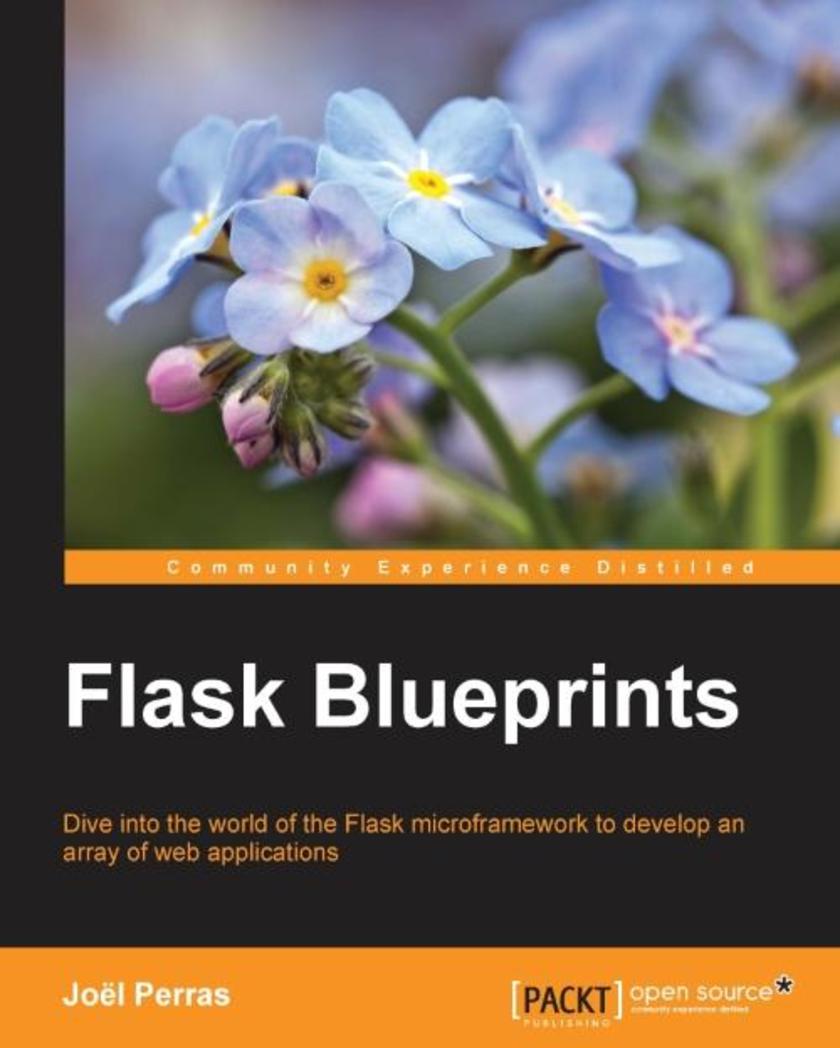
Flask Blueprints
¥80.65
Dive into the world of the Flask microframework to develop an array of web applications About This Book Structure, compose, and build powerful Flask HTML-based applications and JSON/XML-based APIs using advanced application design patterns Integrate third-party Flask extensions for tasks such as social authentication, sending emails, and interacting with databases and cache layers Build a series of Flask applications of increasing complexity Who This Book Is For If you are a Python web developer who has developed basic Flask applications and now wants to build a series of more complex web applications, then this is the book for you. What You Will Learn Use the virtualenv Python package to effectively isolate your development environments Convert a simple one-file Flask application into a more full-fledged multi-package application Integrate Flask-Login for simple user authentication, Flask-WTF for forms, and Flask-SQLAlchemy for database interactions Explore URL routing and dispatching in a blueprint structured application Create your own signals and consume them within your application Learn to leverage Werkzeug, the WSGI library that powers much of Flask Implement custom exceptions for handling non-20x response codes Write your own CLI tools for administrative and development tasks of your Flask application using Flask-Script/Click Build your Flask extensions to encapsulate reusable behaviors across your applications Integrate your application with open source JavaScript-based graphing libraries to create simple data visualizations In Detail Flask is a small but powerful web development framework for Python. Though Flask is termed a micro-framework, it is no way lacking in functionality; there are many extensions available to Flask which helps it to function at the same level as other large frameworks such as Django and Ruby on Rails. This book will demonstrate how to develop a series of web application projects with the Python web micro-framework, and leverage extensions and external Python libraries and APIs to extend the development of a variety of larger and more complex web applications. The book will start by explaining Python’s Virtualenv library and how to create and switch between multiple virtual environments. You’ll first build an SQL database-backed application, which will use Flask-WTF, Flask-SQLAlchemy, Jinja templates, and other methods. Next you’ll move on to a timeline application, built using concepts including pytest-Flask, the Blinker package, data modelling for user timelines, exception handling, and creating and organizing CLI tools. Moving on, you’ll discover how to implement a photo timeline application where you’ll explore topics such as writing and running celery tasks, API error handling and testing, and Werkzeug middlewares. Finally, the book walks you through creating an application which fetches data from GitHub and stores it locally. You will also learn how to install and configure Flask-Click extension. Style and approach This book covers how to effectively use the Flask micro-framework to develop a series of web applications. Each chapter focusses on the development of an application increasing in complexity with easy steps to follow.
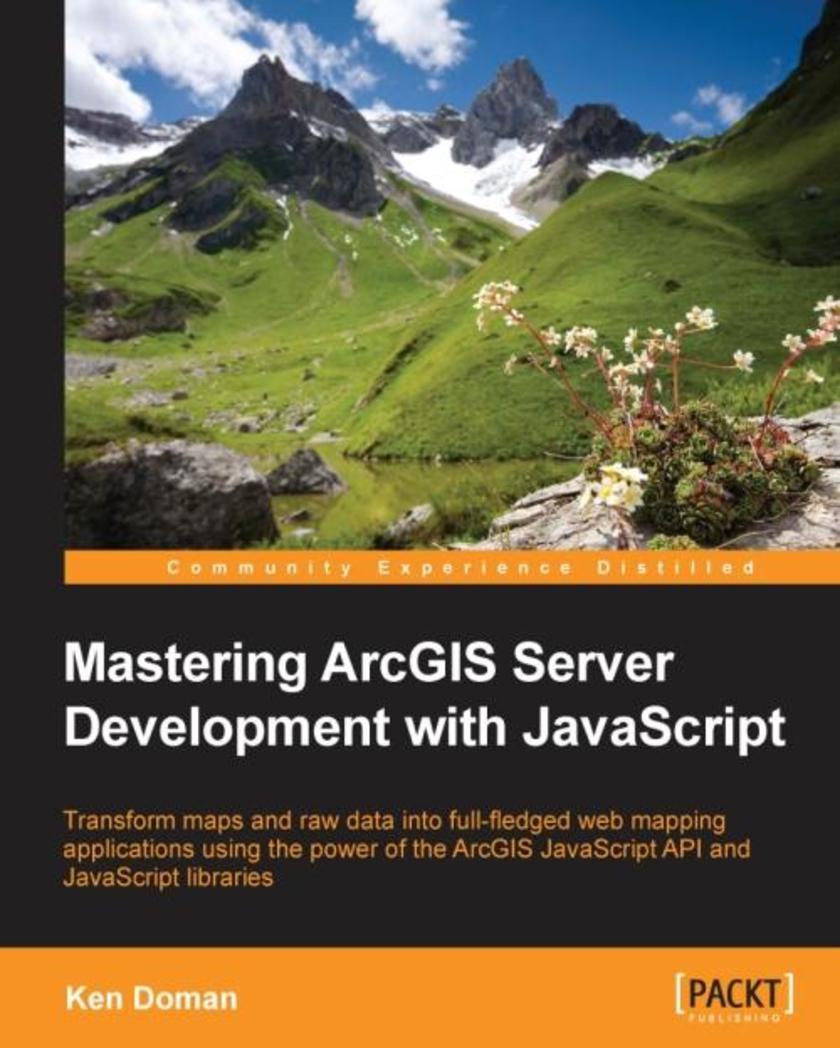
Mastering ArcGIS Server Development with JavaScript
¥80.65
Transform maps and raw data into full-fledged web mapping applications using the power of the ArcGIS JavaScript API and JavaScript libraries About This Book Create and share modern map applications for desktops, tablets, and mobile browsers Present and edit geographic and related data through maps, charts, graphs, and more Learn the tools, tips, and tricks made available through the API and related libraries with examples of real-world applications Who This Book Is For This book is intended for intermediate developers who want to design web mapping applications. You should have some experience with geographic information systems, especially with ArcGIS products such as ArcGIS Server. It also helps to have some experience with HTML, CSS, and JavaScript. What You Will Learn Create single-page mapping applications, lining up data from different sources Search for and display geographic and tabular information based on locations and attributes Customize maps and widgets to deliver the best user experience Present location data intuitively using charts and graphs Integrate mapping applications with your favorite JavaScript frameworks Test the working of your web map application and take advantage of cloud services such as ArcGIS Online Create modern-looking web maps through styling tips and tricks In Detail ESRI and its ArcGIS line of software have been an industry leader in digital map production and publication for over 30 years. ArcGIS Server lets you design, configure, and publish maps that can be viewed and edited through the Internet. After designing basic maps, you may want to find out new and innovative ways to represent information using these maps. In this book, you'll work through practical examples, experiencing the pitfalls and successes of creating desktop and mobile map applications for a web browser using the ArcGIS Server platform. The book begins by introducing you to ArcGIS Server and ESRI's JavaScript API. You'll work with your first web map and then move on to learn about ESRI's building blocks. A Dojo AMS style widget will help you create your own widgets for a map and then see how to collect geographic data. Furthermore, you will learn different techniques such as using Dojo Charts to create charts and graphs to represent your data. Then you will see how to use ESRI JavaScript API with other JavaScript libraries and different styling methods to make your map stand out. By the end of the book, you will discover how to make your application compatible with different devices and platforms and test it using testing libraries. Style and approach An in-depth guide that explores web application development using ArcGIS Server and the ArcGIS JavaScript API. Topics are explained in the context of developing two applications for fictional clients. Details of application development, including possible pitfalls and best practices, are included in this book.
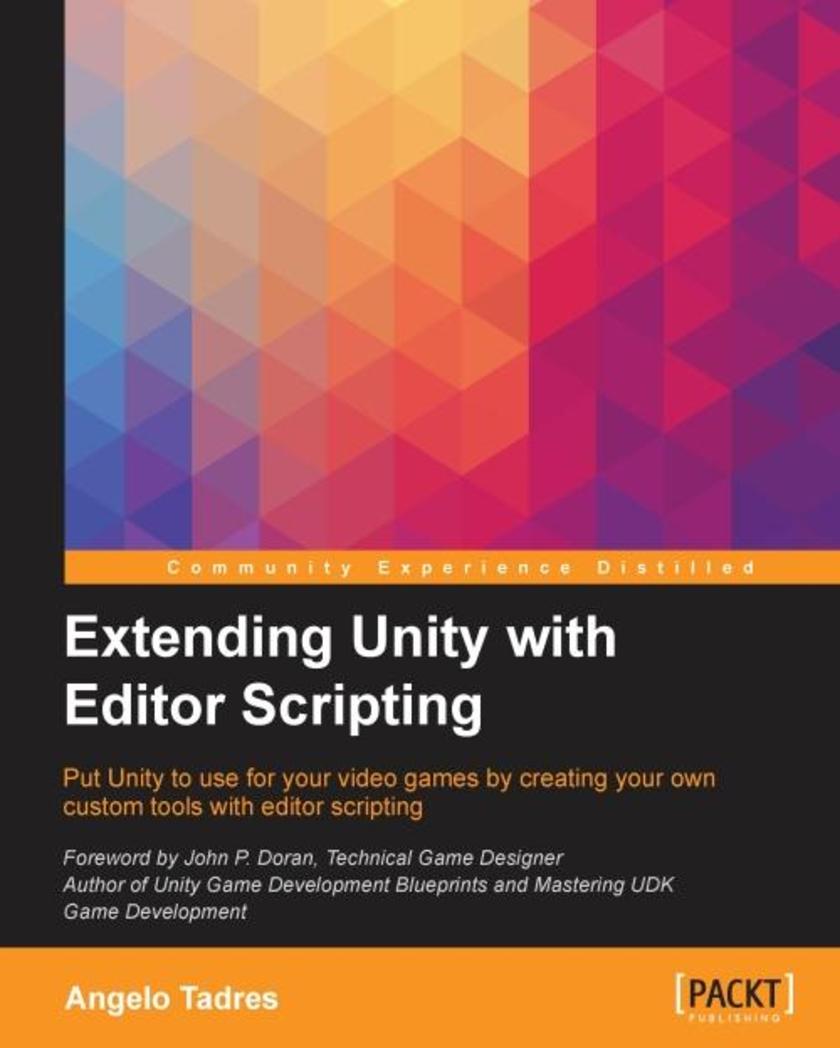
Extending Unity with Editor Scripting
¥80.65
Put Unity to use for your video games by creating your own custom tools with editor *ing About This Book Acquire a good understanding of extending Unity’s editor capabilities for a platformer game by using Gizmos, custom inspectors, editor windows, *able objects, and more Learn to configure and get control over your asset import pipeline using asset preprocessors A step-by-step, comprehensible guide to creating and customizing a build pipeline that fits the necessities of your video game development team Who This Book Is For This book is for anyone who has a basic knowledge of Unity programming using C# and wants to learn how to extend and create custom tools using Unity editor *ing to improve the development workflow and make video game development easier. What You Will Learn Use Gizmos to create visual aids for debugging Extend the editor capabilities using custom inspectors, property and decorator drawers, editor windows, and handles Save your video game data in a persistent way using *able objects Improve the look and feel of your custom tools using GUIStyles and GUISkins Configure and control the asset import pipeline Improve the build creation pipeline Distribute the custom tools in your team or publish them in the Asset Store In Detail One of Unity's most powerful features is the extensible editor it has. With editor *ing, it is possible to extend or create functionalities to make video game development easier. For a Unity developer, this is an important topic to know and understand because adapting Unity editor *ing to video games saves a great deal of time and resources. This book is designed to cover all the basic concepts of Unity editor *ing using a functional platformer video game that requires workflow improvement. You will commence with the basics of editor *ing, exploring its implementation with the help of an example project, a level editor, before moving on to the usage of visual cues for debugging with Gizmos in the scene view. Next, you will learn how to create custom inspectors and editor windows and implement custom GUI. Furthermore, you will discover how to change the look and feel of the editor using editor GUIStyles and editor GUISkins. You will then explore the usage of editor *ing in order to improve the development pipeline of a video game in Unity by designing ad hoc editor tools, customizing the way the editor imports assets, and getting control over the build creation process. Step by step, you will use and learn all the key concepts while creating and developing a pipeline for a simple platform video game. As a bonus, the final chapter will help you to understand how to share content in the Asset Store that shows the creation of custom tools as a possible new business. By the end of the book, you will easily be able to extend all the concepts to other projects. Style and approach This book uses a step-by-step approach that will help you finish with a level editor tool, a custom configuration for the asset import pipeline, and a build pipeline totally adjusted to the video game.
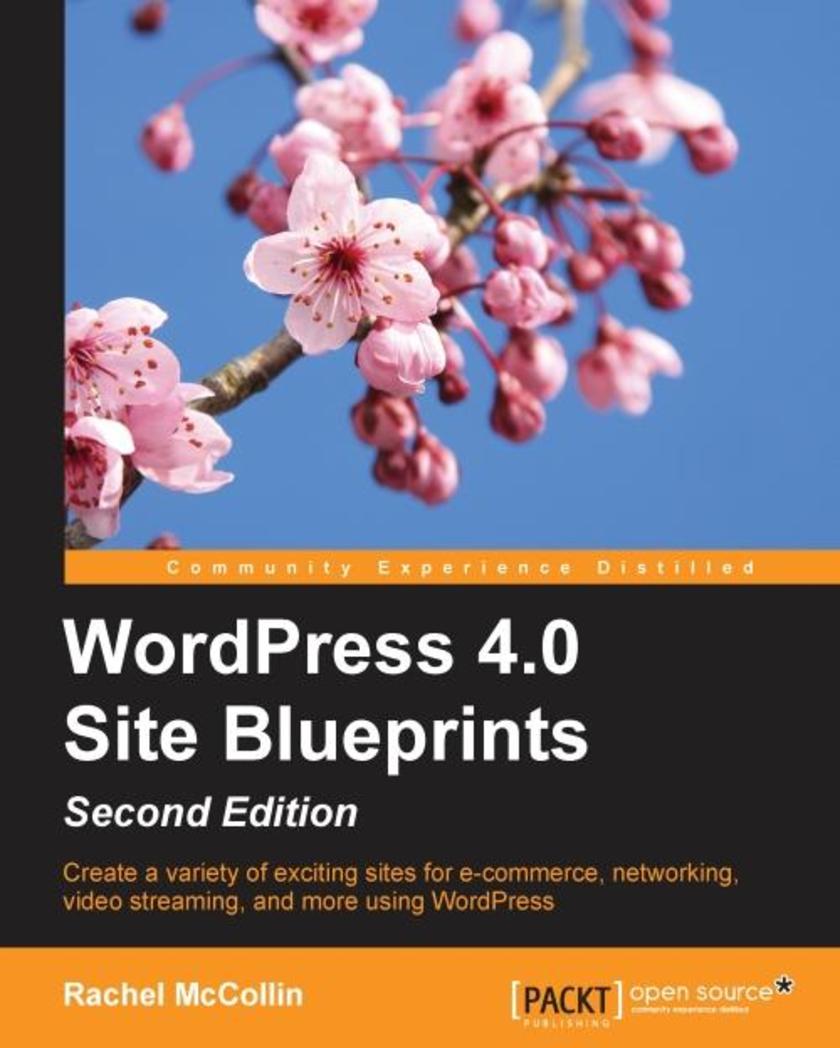
WordPress 4.0 Site Blueprints - Second Edition
¥80.65
Create a variety of exciting sites for e-commerce, networking, video streaming, and more, using WordPress About This Book Build ten different types of website using WordPress Transfer your static site to WordPress and create sites to make money, build communities, and share your ideas The projects in the book will teach you how to use free themes and plugins without any prior coding experience Who This Book Is For WordPress Site Blueprints is suitable for new or experienced WordPress users. You don’t need to be a PHP developer or have ever created a WordPress theme or plugin. Instead the book will help you use themes and plugins (all free) to create a wide range of sites. Familiarity with the WordPress interface will help you but you don’t need to be able to write code. What You Will Learn Migrate your old static site into WordPress Create a network of sites for other people to work with each other Build a great store using the free WooCommerce plugin Create a video streaming site linked to YouTube Create a review site for products, services, or anything you’d like Create a jobs board so people can post jobs and apply for them Create websites that focus on networking such as a social media site, a communications center for your team, and a membership site to build a community Create a beautiful gallery site to showcase your photography In Detail WordPress is the world’s most popular Content Management System (CMS) and you can use it to create any kind of site you or your clients need. Using free plugins and themes for WordPress, you can create a store, a social media site, a review site, a video site, a network of sites or a community site, and more. Wordpress makes your job of creating your own website simple and hassle-free! If you’ve started using WordPress to create a blog or simple website, you’ll have had a taste of the opportunities offered by this massively popular CMS. This book will take you through the process of creating ten popular kinds of site using WordPress with free plugins and themes, each chapter covering various functionality of the web. After having learned how to migrate from your static site to Wordpress in the first chapter, you will then explore the world of social networking websites followed focusing on e-commerce. Without writing too much code, you’ll be able to create a store, a video streaming site, a team communications site, a jobs board, and more. This book is a one-stop solution to resolve all your worries about creating a website that will give the best experience to your users. Style and approach A project-based step-by-step guide to creating ten different types of popular website using WordPress. This book takes you through clear and logical steps, with screenshots and tips along the way to help you follow the guide and learn how to get more from WordPress.
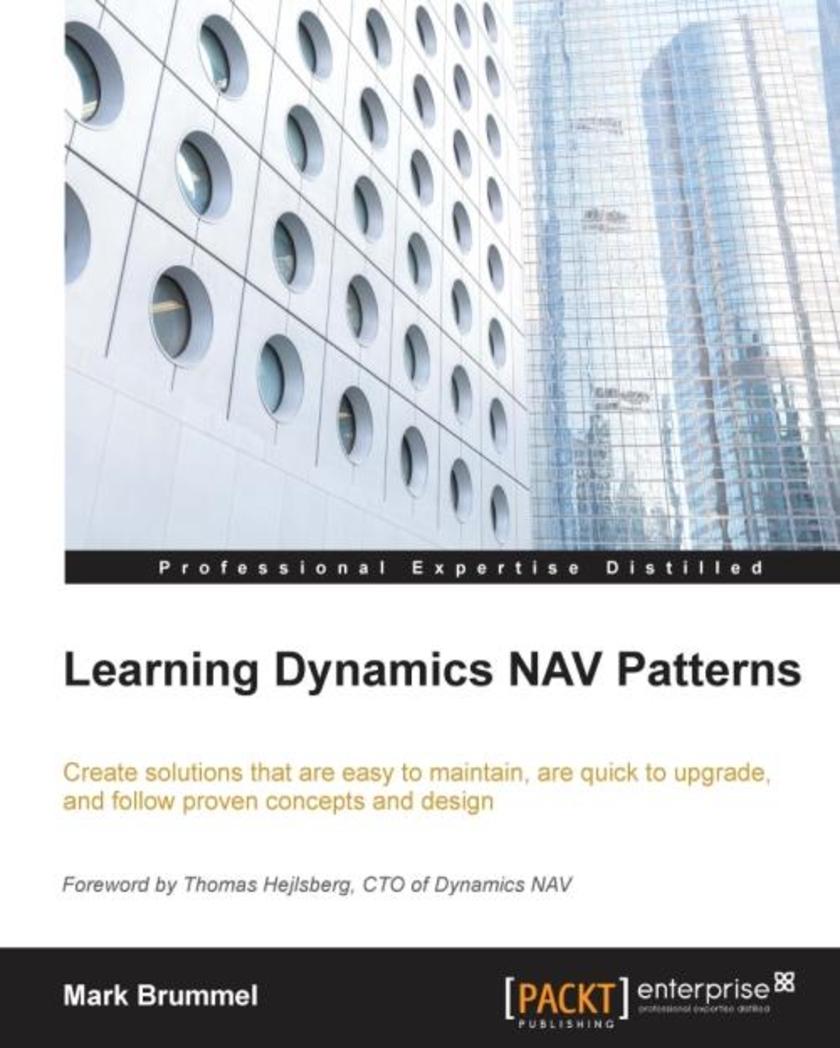
Learning Dynamics NAV Patterns
¥63.21
Create solutions that are easy to maintain, quick to upgrade, and follow proven concepts and designs About This Book Design software that is maintainable outside the ecosystem of their creators Ensure quality by following patterns that have been proved to work Over two dozen practical Architectural and Design patterns Who This Book Is For Learning Dynamics NAV Patterns is intended for developers, architects, (technical) consultants, and application managers. You may have very little or no knowledge about NAV patterns, but you should be acquainted with programming. What You Will Learn Apply object-oriented practices to C/AL programming Structure your application to avoid merge conflicts Refactor legacy code and avoid anti-patterns Design decision trees to decide when to use which patterns Clone codes and their application in Dynamics NAV Make your application extensible by creating predefined hooks and facades In Detail Microsoft Dynamics NAV is a complete ERP system, which also contains a robust set of development tools to support customization and enhancement. These include an object designer for each of the seven application object types, a business application oriented programming language with .NET interface capability, a compiler, a debugger, and programming testing language support. Learning Dynamics NAV Patterns will guide you through the NAV way of solving problems. This book will first introduce you to patterns and the software architecture of the NAV and then help you to build an example application. Then, it walks you through the details of architectural patterns, design patterns, and implementation patterns. This book will also talk about anti-patterns and handling legacy code. Finally, it teaches you to build solutions using patterns. Proven patterns and best practices will help you create better solutions that are easy to maintain in larger teams across several locations. It will guide you through combining abstract patterns using easy-to-understand examples and will help you decide which patterns to use in which scenarios. Style and approach This book explains the concepts of patterns, code structuring, and object-oriented concepts in a way that is easy to understand for Dynamics NAV specialists through practical examples.

Unreal Engine Physics Essentials
¥71.93
Gain practical knowledge of mathematical and physics concepts in order to design and develop an awesome game world using Unreal Engine 4 About This Book Use the Physics Asset Tool within Unreal Engine 4 to develop game physics objects for your game world Explore the Collision mechanics within Unreal Engine 4 to create advanced, real-world physics A step-by-step guide to implementing the Physics concepts involved in Unreal Engine 4 to create a working Vehicle Blueprint Who This Book Is For This book is intended for beginner to intermediate users of Epic Games' Unreal Engine 4 who want to learn more about how to implement physics within their game-world. No matter what your knowledge base of Unreal Engine 4 is, this book contains valuable information on blueprint *ing, collision generation, materials, and the Physical Asset Tool (PhAT) for all users to create better games. What You Will Learn Get to know basic to intermediate topics in mathematics and physics Create assets using the Physics Asset Tool (PhAT) in Unreal Engine 4 Develop Collision Hulls, which are necessary to take advantage of Unreal Engine 4’s physics and collision events Use constraints to create advanced physics-based assets for your game-world Working knowledge of physics bodies, physics damping, and friction within Unreal Engine 4 Develop physical materials to recreate real-world friction for substances such as glass and ice Create a working vehicle blueprint from scratch using assets provided by Unreal Engine 4 Gain knowledge about implementing advanced physics in Unreal Engine 4 using C++ programming In Detail Unreal Engine 4 is one of the leading game development tools used by both AAA and independent developers alike to create breathe-taking games. One of the key features of this tool is the use of Physics to create a believable game-world for players to explore. This book gives readers practical insight into the mathematical and physics principles necessary to properly implement physics within Unreal Engine 4. Discover how to manipulate physics within Unreal Engine 4 by learning basic real-world mathematical and physics concepts that assist in the implementation of physics-based objects in your game world. Then, you'll be introduced to PhAT (Physics Asset Tool) within Unreal Engine 4 to learn more about developing game physics objects for your game world. Next, dive into Unreal Engine 4’s collision generation, physical materials, blueprints, constraints, and more to get hands-on experience with the tools provided by Epic to create real-world physics in Unreal Engine 4. Lastly, you will create a working Vehicle Blueprint that uses all the concepts covered in this book, as well as covering advanced physics-based topics. Style and approach An easy-to-follow reference text filled with working examples of physics within Unreal Engine 4. Each topic is broken down to easily explain how to implement physics and physical objects in your game-world using the tools provided by Epic Games Unreal Engine 4.
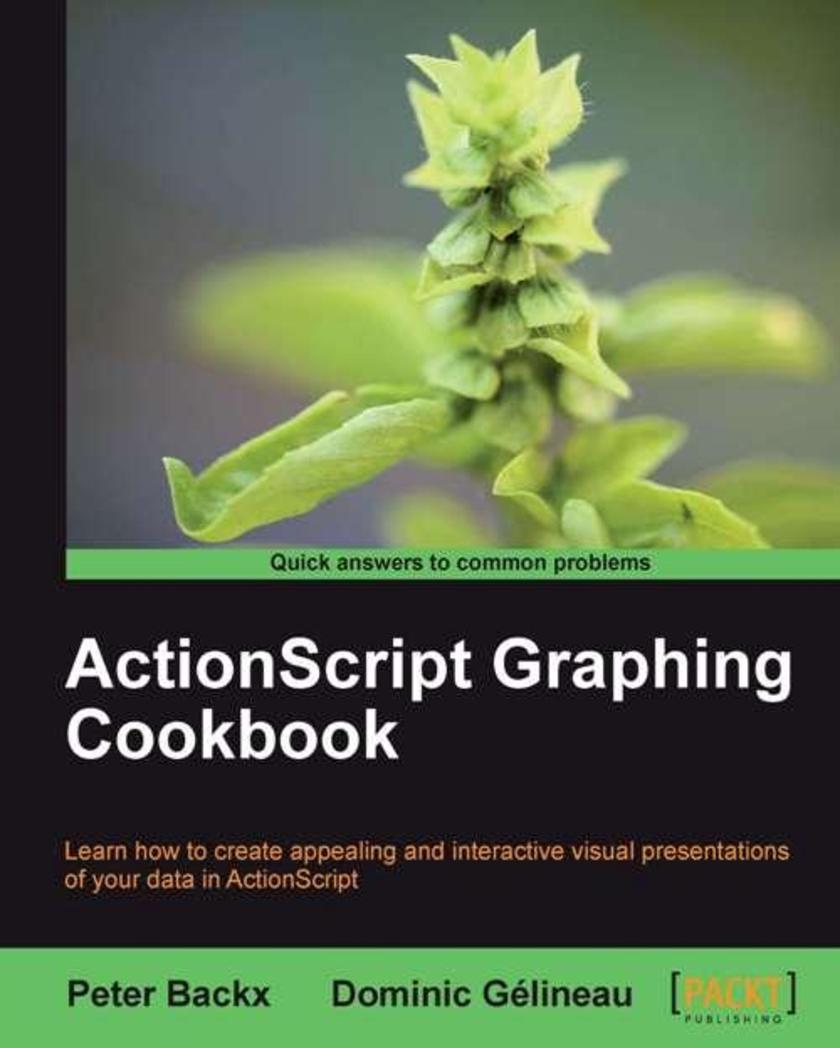
ActionScript Graphing Cookbook
¥80.65
Step-by-step instructions guide you from your very first graphical program to highly complex 3D presentations. Although a few recipes explain charts in Flex, this book is firmly focussed on using ActionScript code and data to draw graphs. The "ActionScript Graphing Cookbook" is aimed at any ActionScript developer who wants to add data visualization to their skill set. The reader should be familiar with ActionScript basics, but no deep knowledge of any graphical functions is required.
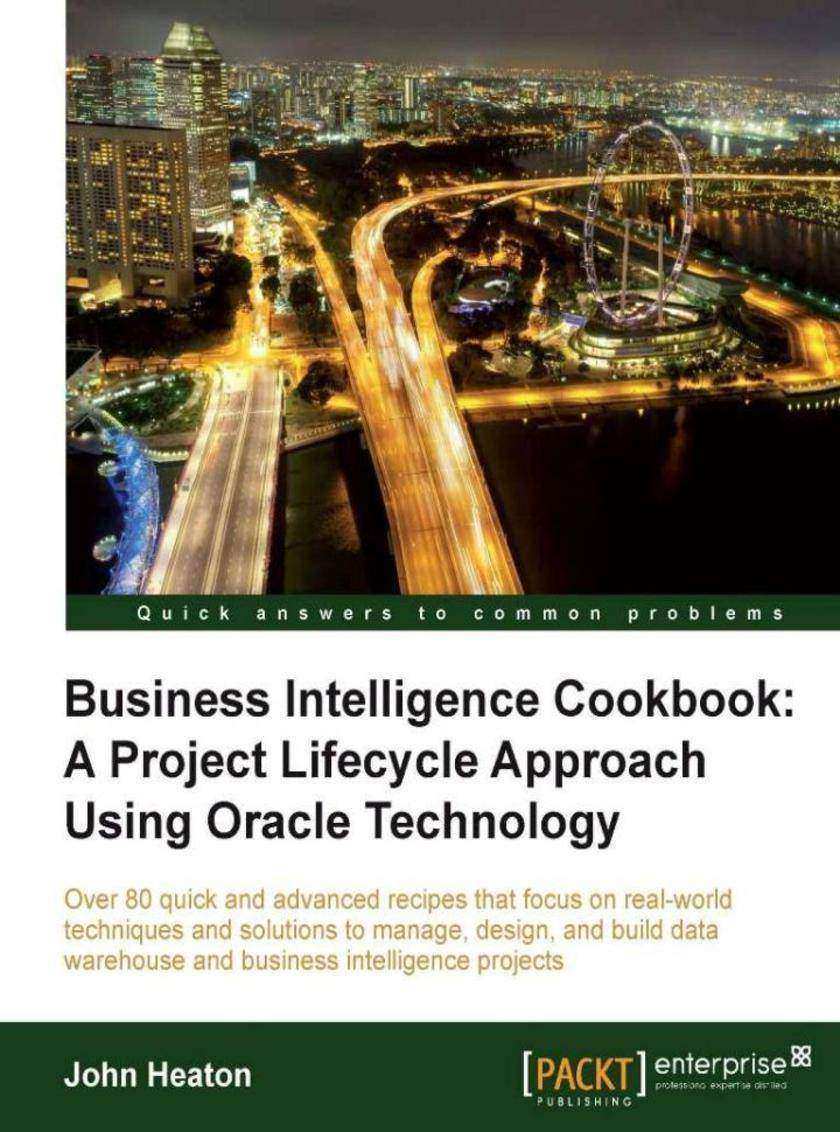
Business Intelligence: A Project Lifecycle Approach Using Oracle Technology Cook
¥107.90
This book is written in a simple, easy to understand format with lots of screenshots and step-by-step explanations. If you are Project Managers or IT professionals looking to design and develop a data warehouse and business intelligence solution, then this is the best guide for you. This book assumes that you have a fundamental knowledge of data warehouse and business intelligence projects.
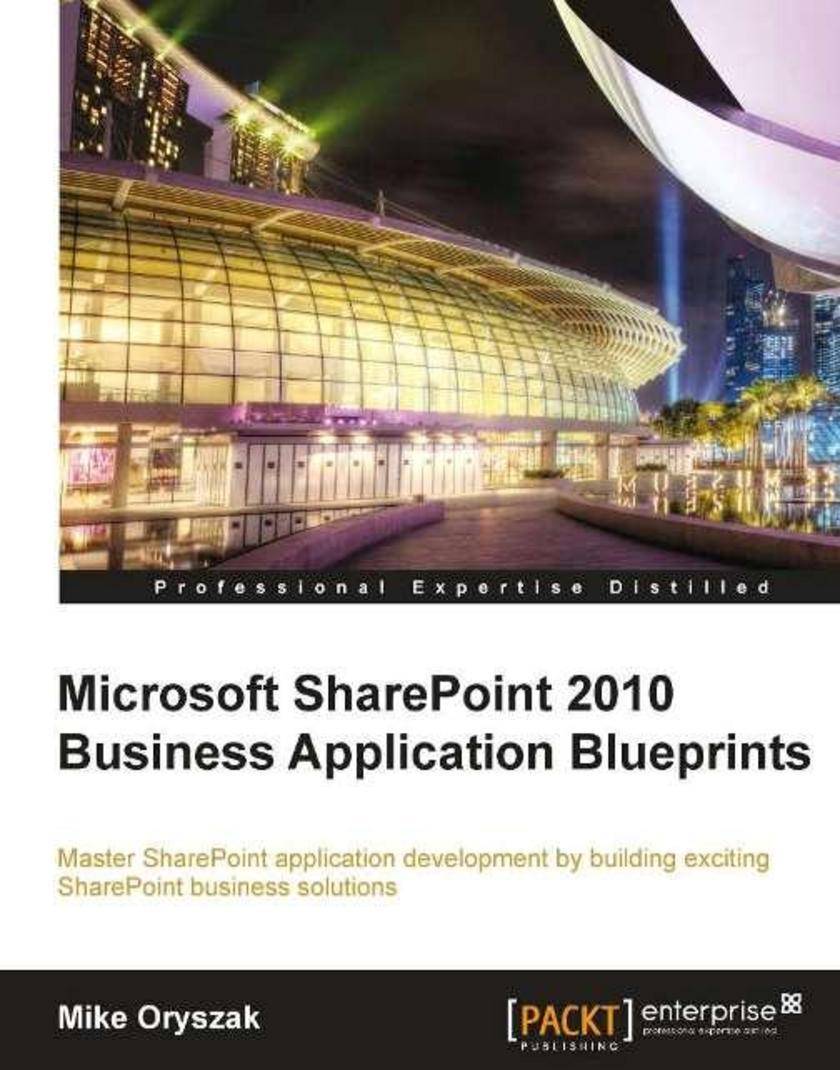
Microsoft SharePoint 2010 Business Application Blueprints
¥80.65
The hands-on example solutions in this book are based on fictitious business development briefs, and they illustrate practical ways of using SharePoint in various business scenarios. A chapter is dedicated to each example SharePoint solution covering step-by-step instructions for building the SharePoint solutions, aided by the extensive use of screenshots. This book is for SharePoint developers, consultants, and administrators who want to build a range of SharePoint solutions that extend the SharePoint platform, and see how to apply the many available SharePoint features in different scenarios.
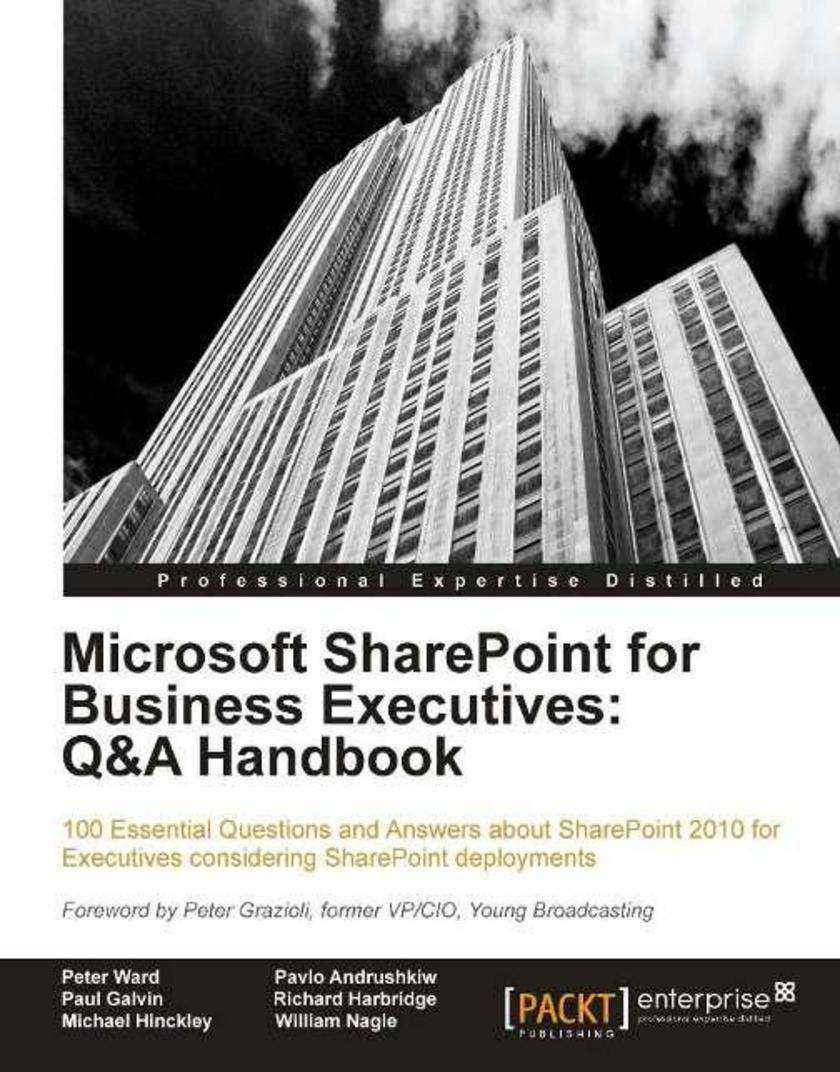
Microsoft SharePoint for Business Executives: Q&A Handbook
¥71.93
“Microsoft SharePoint for Business Executives: Q&A Handbook” is a quick, non-technical reference for business executives who need to get up to speed with SharePoint and understand how to make the right decision about implementations. With an easy to absorb Q&A approach and short bite size chapters focused on defined SharePoint subjects, the book follows specific SharePoint situations drawn from real world experience, enabling you to learn from anecdotes and case studies along the way. “Microsoft SharePoint for Business Executives: Q&A Handbook” is the perfect companion for business executives or non-technical team leaders who don’t want to trawl through a detailed, hands-on functionality guide to get up to speed with SharePoint. If you simply need to understand important implementation decisions or have the confidence to challenge your technical team on an approach, this book will prepare you to ask the right questions and make the right decisions. No prior knowledge of SharePoint is required.
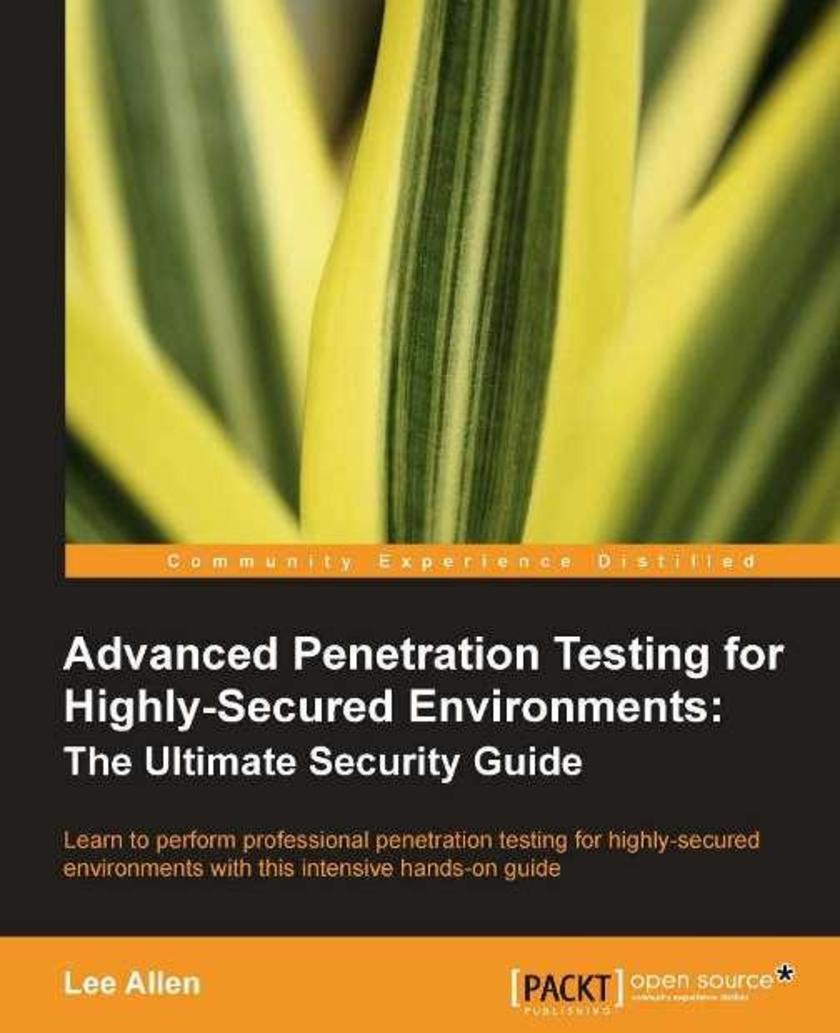
Advanced Penetration Testing for Highly-Secured Environments
¥107.90
An intensive hands-on guide to perform professional penetration testing for highly-secured environments from start to finish. You will learn to provide penetration testing services to clients with mature security infrastructure. Understand how to perform each stage of the penetration test by gaining hands-on experience in performing attacks that mimic those seen in the wild. In the end, take the challenge and perform a virtual penetration test against a fictional corporation. If you are looking for guidance and detailed instructions on how to perform a penetration test from start to finish, are looking to build out your own penetration testing lab, or are looking to improve on your existing penetration testing skills, this book is for you. Although the books attempts to accommodate those that are still new to the penetration testing field, experienced testers should be able to gain knowledge and hands-on experience as well. The book does assume that you have some experience in web application testing and as such the chapter regarding this subject may require you to understand the basic concepts of web security. The reader should also be familiar with basic IT concepts, and commonly used protocols such as TCP/IP.

Oracle Advanced PL/SQL Developer Professional Guide
¥107.90
This book is packed with real world examples that cover all the advanced features of PL/SQL. In turn, each major certification topic is covered in a separate chapter that makes understanding concepts easier. At the end of each chapter, you will find plenty of practice questions to strengthen and test your learning.If you are a PL/SQL developer looking for deeper insight and a move from mid-level programmer to professional database developer, then this is the best guide for you. This book is also an ideal guide for all the Associate level PL/SQL programmers who are preparing for the Professional 1Z0-146 certification. This book assumes you have prior knowledge of PL/SQL programming.
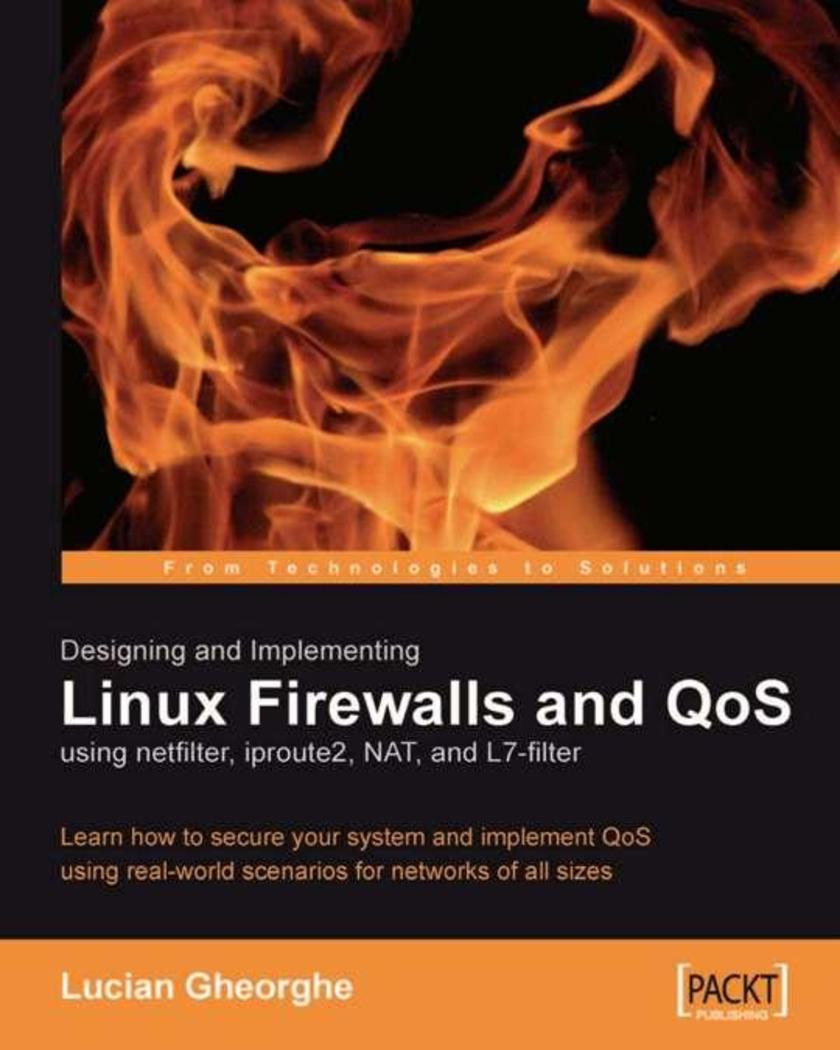
Designing and Implementing Linux Firewalls and QoS using netfilter…
¥71.93
The author draws on his experience to offer the reader valuable advice on the best practices. Providing only necessary theoretical background, the book takes a practical approach, presenting case studies and plenty of illustrative examples. This book is aimed at Linux Network administrators with some understanding of Linux security threats and issues, or any one interested in securing their systems behind a firewall. Basic knowledge of Linux is presumed but other than that this book shows you how to do the rest, from configuring your system to dealing with security breaches.
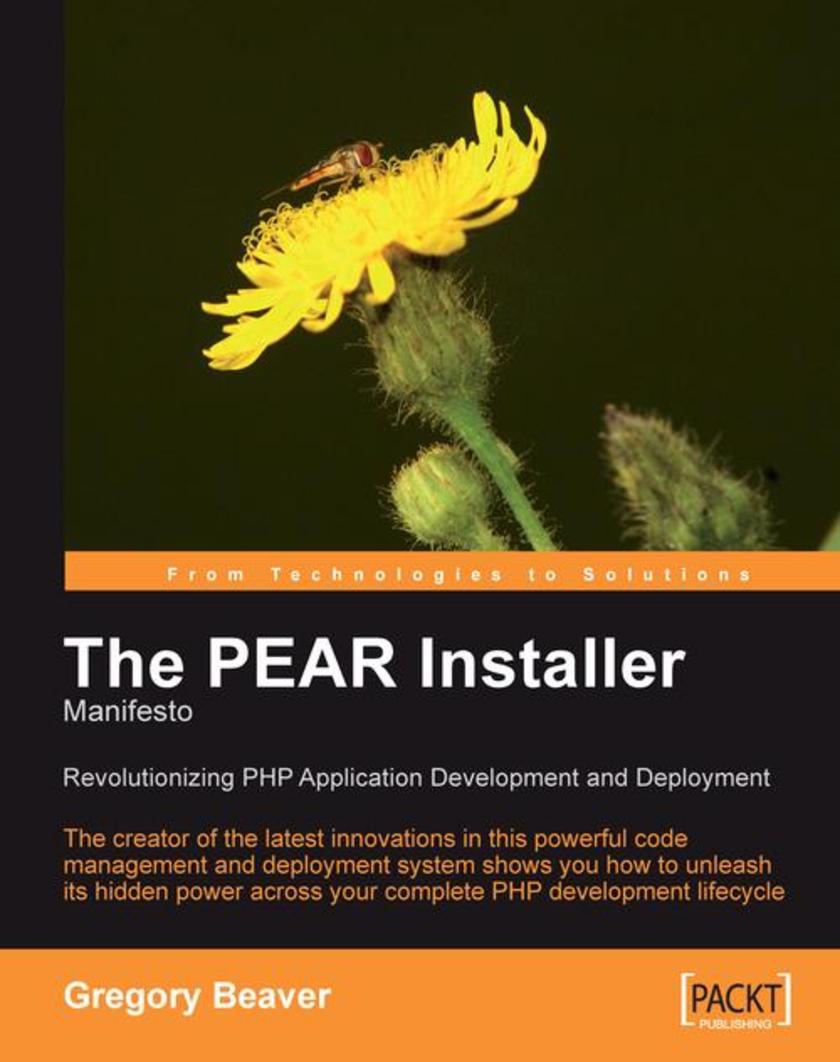
The PEAR Installer Manifesto
¥80.65
This book is a comprehensive and well structured tutorial on using PEAR Installer, but it is also much more than that. As the creator of the latest versions of the PEAR Installer (1.4.0+) , the author is passionate about the benefits of a well managed development and deployment process. The book shows how the PEAR Installer works in detail, and then takes you through a comprehensive tour of how you can apply it all stages of the development lifecycle, with practical examples and advice throughout. It will build your technical skills and understanding, and also widen your perspective on managing an effective development process. The book is not just for PHP developers who want to understand how the PEAR Installer works, and what it can do for them, but more generally for PHP developers seeking a better way to deploy their applications and manage updates. It does assume that you have a good working knowledge of PHP development, and are dealing with projects of a sufficient scale and complexity to warrant an investment in a structure process.

Building Websites with VB.NET and DotNetNuke 4
¥71.93
You can use this book to help you set up and administer a DotNetNuke portal, even if you have a limited knowledge of ASP.NET. You will learn how to setup and administer an example site, stepping through all the tasks to ease your learning. If you are a developer, this book will help you extend the DotNetNuke portal by first helping you understand how the core framework works and then show you how to create custom modules and skins. A rudimentary knowledge of VB.NET programming is assumed, but the emphasis is not on becoming a better VB.NET programmer but on taming DotNetNuke. This book has been written for both the beginner wanting to set up a website and also ASP.NET developers with a grasp of VB.NET who want a deeper understanding of how to work with DotNetNuke. To work with the DotNetNuke code, you will need access to Visual Web Developer Express or Visual Studio .NET 2005. No prior knowledge of DotNetNuke is assumed.




 购物车
购物车 个人中心
个人中心



